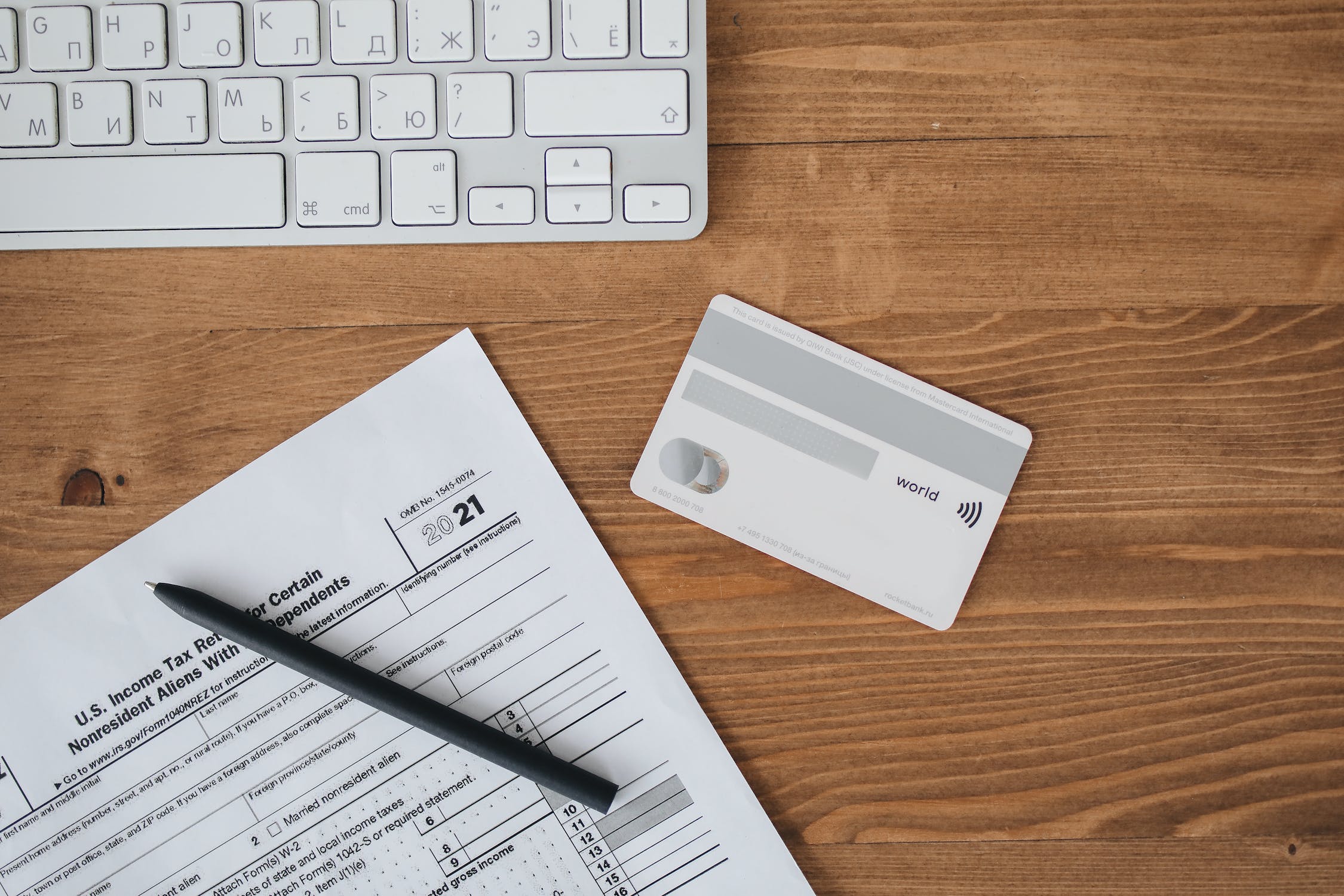Knowing how to manage your credit score is an essential aspect of personal financial. A high credit score will open doors and provide you with the highest rates of interest when you need to get money to purchase an automobile, a house or any other major purchase.
However a low credit score can shut the doors to those same opportunities making it more difficult to obtain a loan credit card. And if you are able to, you’ll probably be charged a higher interest rate. What do you do if your credit score isn’t as great? You can take part in self-help credit repair to enhance your credit standing.

What exactly is DIY credit repair?
DIY credit repair is a series of steps, beginning with obtaining free credit report, then analyzing them for any errors or negative items, and resolving any inaccuracies and then implementing ways to improve your credit standing. It’s not a quick fix but over time you will see significant improvements in your credit score.
Can you fix your own credit?
Yes, absolutely. Although it may appear to be a daunting task, especially if have a low credit rating, the reality is that a lot of the strategies employed by credit repair professionals businesses can be used by anyone. You’ll need a good knowledge of the process of credit repair and some organizational skills and a little patience.
Do-it-yourself credit repair: The Benefits
The primary reason to DIY credit repair is possibility of cost savings. The hiring of a credit repair business is costly and, unfortunately, there are a lot of credit repair scams available. By doing it yourself, you’ll be able to avoid these expenses and the potential pitfalls. Additionally playing an active part to repair your credit will help you to understand the process of credit, which will help you in the long term.

Understanding Credit Reports
Credit reports are a thorough overview of your credit report created by the credit bureau. It contains information like your credit score as well as payment history and any outstanding debts. In the United States, there are three major credit bureaus – Experian, TransUnion, and Equifax – and each provides a free credit report once a year through the website AnnualCreditReport.com.
Analyzing Your Credit Report
After you have the credit reports you’ve requested, you need to examine them for mistakes or discrepancies. They could be due to incorrect credit limits as well as inaccurate payment history or fraudulent credit accounts set up under your name – an indication of identity theft. You should also identify areas to improve like high credit card balances, or late payments.

Understanding Credit Scores
The credit score you receive is a graphical representation of your creditworthiness from the information contained in your credit report. The most widely utilized credit scores are FICO scores, which were created by the Fair Isaac Corporation.
Factors that impact your credit score include payments history and total debt, the time in credit history, the number of credit accounts and the mix of your credit. A poor credit score could result in more expensive interest rates, or even being refused credit completely.
FICO Scores
In the different credit scoring models FICO scores are the most commonly utilized by lenders as well as credit card companies. FICO credit scores vary between 300 to 850.
| FICO SCORE RANGE | CATEGORY |
|---|---|
| 300 – 579 | Very Poor |
| 580 – 669 | Fair |
| 670 – 739 | Good |
| 740 – 799 | Very Good |
| 800 – 850 | Exceptional |
When you apply for credit or loans the lenders examine your credit scores and credit reports to determine your creditworthiness. This assessment together with other financial information determines your eligibility for loans or credit cards. A poor credit score could result in higher interest rates because lenders see a higher likelihood of default.
Good credit scores, on the other hand typically guarantee the most favorable terms and conditions. This makes it essential to maintain a good credit score to qualify for lower interest rates. But what are the factors that affect the credit score of yours? Let’s take a look.
Payment History
The largest portion of your credit score dependent on how well you manage to pay your monthly bills. In reality, your payment history is responsible for 35 percent of your credit score! You’ll find this information on your credit report through various credit accounts you’ve used in the past seven years.
In each credit card, loan or mortgage you’ve taken out you’ll find out how much you’ve owed each month for an extended time. Also, you’ll see your amount.
Other creditors, such as utilities or cell phone companies may report late payments but they usually don’t report payments timely made.
If you have a late payment on your account in your account, it’ll be marked the exact date it was due. It could range between 30 and 150 days (or more, if your account was in default). Naturally, the later the payment is made, the higher your credit score is likely to decline due to this.
Total Debt
Then, 30 percent of your FICO score is related to the amount of debt you have. Installment loans, such as mortgages or student loan don’t weigh as in the same way as revolving debts such as credit cards.
Lenders look at your debt-to-credit ratio, or credit utilization. It is basically a measure of how much you owe in relation to the maximum credit limit that you have on your credit cards.
If you’re getting close to maxing out your credit will suffer. Because it’s a ratio, two people with similar credit card balances might get different FICO scores, especially if one has a higher credit limit.
For instance, a customer who has $3,000 in credit on a credit card that has a credit limit of $10,000 only has an average ratio of 30% debt to credit. For someone else, a person with $3,000 in credit on a credit line with only a limit of $5,000 would have a ratio of 60% and the other factors being equalthe credit score.
The length of the credit history
15 percent of your credit score is contingent on the length of your credit history. Creditors aren’t able to assess your capability or willingness to pay back loans when you have a short credit history. The FICO credit scoring model takes into account how long your credit accounts were in operation including credit cards.
Unfortunately rent payments don’t count in the FICO score. However there are rental reporting services which you can use as a supporting document in your credit applications.
New Credit Accounts
Another section you’ll find on your credit reports Inquiries. This refers to every request for credit you’ve made within the last two years. It’s 10% of your FICO score.
Each time you make a hard inquiry, it lowers your credit score around five points in the initial year. This is the case unless you’ve made several inquiries to the same credit product within only a few weeks from each other. This is merely a sign that you were rate-shopping for the loan or credit card and in this instance they’re considered to be one inquiry.
Credit Mix
The final 10 percent of your credit score is based on the type of credit that you’ve. We have mentioned that revolving credit like retail cards or credit cards affect your credit more than installment loans. Installment loans come with some type of asset that is tied to them, such as the car or house.
It is more likely that you will pay back these loans than unintentional purchases made using credit cards because you own something that is worth it.
The student loan is also considered more attractive than credit cards as they are a sign of investment in your future earning potential. They say the higher your earnings earn and earn, the quicker you can repay your loan!

The impact of negative information on Your Credit Report
A negative credit history such as collections, charge-offs, bankruptcies, late payment foreclosures, judgments and repossessions, may significantly impact your credit score. These types of items may remain on your credit report for seven to 10 years, however their impact diminishes with time.
The FCRA sets limits on the length of time that negative items are allowed to remain on your credit report. However, the positive ones and neutral ones are typically kept on your credit report for an indefinite period of time. While certain negative accounts are able to be removed from your credit report prior to the time frame they are listed on however this isn’t always feasible or desirable.
Let’s look at each kind of negative credit account you might encounter and the expected duration on your credit report.
Charge Offs
Charge-offs are charge-off is a debt that is deemed uncollectible by a lender, that then removes the debt from their account that is reportable as past due for the purpose of improving their accounts receivables report. However, the obligation often persists, usually being sold to the “debt buyer” who will attempt to collect the entire amount. A charge-off will remain on your credit file for seven years and 180 days following the initial date of delinquency.
Collections
Collections can be a challenge as they could inadvertently damage your credit rating by setting the date of start. They could remain on your credit report for a period of seven years from the time you first started to fall behind with the creditor you originally signed up with.
Late Payments
Any payment that is more than 30 days overdue will be reported in your credit file, however some lenders don’t reveal this until a second payment is not made. The account that is in default can remain on your credit report for seven years after the date the payment was made last.
Bankruptcies
Bankruptcies remain on your credit record for not longer than 10 years. If the court decides to dismiss your case the ten years begin from the date of dismissal.
The length of time depends on the type bankruptcy you have filed. For instance Chapter 13 bankruptcy stays on your credit report for just seven years, whereas Chapter 7 bankruptcies stay on your credit report for 10 years.
Foreclosures
Foreclosures will be on your credit report for a period of seven years. However, you might be eligible for a mortgage earlier after you’ve regained financial stability.
Judgments
While judgments may remain on your credit record for as long as seven years The three main credit bureaus don’t longer record them. The exact length of time is determined by the limitation period in your state.
Repossessions
Repossessions remain on your credit file for as long as seven years. However, you are still liable for any debt that remains after the property has been taken regardless of whether or not it appears on your credit report.

The DIY Credit Repair Method
Self-help credit repair is definitely feasible without the need of a professional credit repair firm. Before you begin, however you should be familiar with the Fair Credit Reporting Act (FCRA). It is important to know your rights in working with credit bureaus as well as creditors and collection agencies.
The first step to repair credit is to dispute mistakes in your credit reports. If you discover any inaccuracies you can submit an inquiry letter to the credit bureau, who has 30 days to look into the matter. Be sure to submit any supporting documents by certified mail to keep a document of the dispute. The credit bureau will then make the corrections or erase it from your credit report.
Follow these step-by-step directions to find out how to spot negative entries such as late payments as well as delinquent loans and other types of negative entries. You stand a better chance to have them removed from your credit report.
Step 1: Access Your Free Credit Reports
Perhaps, you’ve already obtained your credit report through Equifax, Experian, and TransUnion. If not, the FCRA allows you to get one free credit report from each credit bureau at AnnualCreditReport.com every twelve months.
It is possible to download your credit reports within minutes after entering a few personal details and answering a couple of security questions. You can also submit an application for a physical copy of your credit history to be delivered via mail if prefer. You can also call 1-877-322-828.
Step 2: Read Every Credit Report Carefully
When you’ve got your credit report free You should scrutinize each report for accuracy. The credit reports you receive may not be the same because certain lenders and creditors only report to a couple of credit bureaus.
Even if they submit their information to all three credit bureaus one credit bureau could have a mistake when recording your payment history. Therefore, you must take a look at the three credit bureaus using an eloquent comb instead of thinking that the information is identical for each.
Personal Information
First, ensure that your personal details are correct and there are no other people included on your credit reports. After that, carefully go through each page and review all your account information.
Inaccuracies
Examine everything from the date of opening of your account until the most recent balance you’ve had. Note any account that appears untrue or even suspect, particularly in the event of a negative marking such as a late payment.
You should also confirm that you are the owner of each line of credit in order to ensure that no one has opened an account in your name. If you find any accounts that you don’t recognize you could be victimized by identity theft.
Collections & Public Records
After you’ve reviewed all your closed and open credit accounts, pay attention to the negative record part of your credit report.
This section contains all accounts that you haven’t settled according to the terms you agreed to collection, or public records you’ve have. Anything that is listed in this section can be the most damaging to your credit score. It should definitely be on your list of things to contest.
Step 3: File Disputes, and Request to have negative information removed
If you discover any inaccurate or misleading, out of date or incomplete, biased or ambiguous items on your credit file, it’s your right and obligation to challenge the information and have it removed. Additionally, getting rid of negative items on your credit report can affect your credit score.
Although many do not realize that they have the ability to have them removed thousands of people are successfully arguing these items with credit bureaus each day. It’s much easier than you think. It’s also a far better alternative than waiting for years for negative data to disappear from your credit report.
Writing a Credit Dispute Letter
Start by sending a dispute letter to your credit bureau that lists the negative items. You can find a sample dispute letter here. Keep a copy of it for yourself, and ensure that you send it to them via certified mail with a return receipt requested to ensure you can prove that they received the letter.
At that point the credit reporting company is given 30 days to reply to your inquiry. If you ordered your credit report from AnnualCreditReport.com, they have an additional 15 days to respond, making it a total of 45 days.
Some people will inform that it is possible to contest online. We’ve found that people have better results when they dispute their credit report through regular mail.
What should be included
In your letter of dispute Make sure to include the errors in your credit report. If you have evidence to support your claim Include copies of the documents — not the originals. However, it’s not required to include the additional documentation. Remember that the burden of proving lies with credit bureaus and the creditors that report the information on you.
Additionally, be certain to mention your name, contact number, and address. Make sure to use a professional and polite tone, without expressing any opinion. You can either write down the reasons you’re contesting or simply state that you want to challenge it.
When you make a request for a dispute The law in the United States mandates that the three credit report agencies investigate the matter, and the creditor in question must be able to prove the item’s exactness.
It is possible that you will be required to switch many times between your creditor and reporting agency. It could take some energy and time, but the impact on your credit score may be worth the effort.

Handling Collection Accounts
Collections management requires prudence to avoid accidentally resetting the statute of limitations. In your DIY credit repair plan begin by focusing on the most recent collections and debts that are newer. Newer debts have more weight.
Non-medical debt can affect your credit score more in comparison to medical debt therefore, you should prioritize these. Try to pay in full as partial ones could change the time that the accounts are on your credit report.
The option of negotiating a settlement to pay less than what is owed is an alternative. But, keep in mind that the amount you forgive can be declared as income in your tax returns, leading to higher taxes or an increase in your tax bracket.
Make sure the collection agency has acknowledged your payments. Make sure you sign a payment agreement in writing and keep copies of all documents related to your account to guard against fraud. These measures can help prevent the long-term harm to your credit score.
7 Quick Tips to Improve Your Credit Scores
The removal of negative information from your credit report erased can greatly increase your credit score. However the process of fixing your credit can take a long time.
If you’re looking to make quick improvement, you can employ some strategies. Some are small fixes, while others can have significant effects. So, go through the entire list to see which you can apply today to repair your credit.
1. Lower Your Credit Utilization Ratio
Remember the credit utilization ratio we spoke about earlier? The more you’re able to max on your credit card the lower your credit score will be.
It is therefore logical that paying down credit card balances can reduce your ratio and improve your credit score. Make sure you are using credit cards that are maxed out instead of those which have small balances. If you keep your balances on credit cards at a minimum you could experience up to 100 points 100 points increase in the course of a few months.
2. Request a Credit Limit Increase on Credit Cards
If you’re unable to repay the additional debt to lower your credit utilization, then you have the chance of improvement. Contact your credit card provider and ask for an increase in the credit limit of the credit card you have.
You don’t want to take on any more debt than you have to pay. Instead, you’d like to have a larger credit limit to ensure that your credit card balance is less of your credit limit.
Here’s an example. Let’s say you owe $5,000 on an account with an amount of $10,000. You’d be using 50 percent of the credit. However, if you have your credit limit to $15,000, the balance of $5,000 would be 33 percent of your credit limit.
When you call creditors of credit cards, it’s helpful to have regular timely payments previously. Most likely, they’ll appreciate customer loyalty to the point that they will help you improve your credit score.
3. Become an Authorized User
The process of building your credit score takes a significant amount of time. However, there’s an alternative. You can sign up as an authorized user on a friend’s or family member’s account that has a solid, long-standing credit. This credit card will add to your credit report in all its entirety.
There’s a risk associated with this decision. If a relative or friend ceases to make payments or has an outstanding balance these negative marks will appear on your credit report.
Also in the event that you accrue large balances and fail to pay your bills and the credit of the other party will be affected. Of of course, they don’t have to grant you access to their credit account in order to do this. They only need to put your name on the account. This can be a wonderful method however it requires some caution.
4. Consolidate Your Credit Card Debt
Another way to improve your credit score is to think about the possibility of an unsecured credit consolidation loan. It’s a form of personal loan that can be used to pay off a variety of credit cards, and then you can make one monthly installment to the loan.
Based on the interest rate you pay You may be saving money on your monthly payments by obtaining the lowest rate on your loan. Check out pre-approvals to determine what rates you are eligible for, and then see how they compare against your current credit card rate.
Even if your monthly installment remains the same your credit score can get a boost due to the fact that installment debt is seen more favorable than revolving loans.
5. Take Out a Credit-Builder Loan
Smaller credit unions and banks typically offer credit-building loans to help individuals improve their credit. If you take out the loan, money is transferred into a bank account you aren’t able to access.
You will then make each month payments on the amount of the loan. After you’ve paid back the entire loan you can release the money to you to make use of.
It may seem odd to make payments with money you’re not even able to spend however it’s a way for the institution to feel safe while you have the opportunity to prove that you are an honest borrower.
When you have completed your payments and get the cash, the lender will report your timely payments to three credit bureaus. This boosts your credit score.
6. Get a Secured Credit Card
Secured credit cards are a great stepping to a better credit. They require a security deposit, which acts as a credit limit. Regular punctual payments to your card will gradually build a positive credit history which can lead to better credit scores.
7. Strategies for Debt Management
Controlling your debt is an essential element of the process of repairing credit. You can think about strategies such as the snowball or avalanche strategy that both are focused on systematically paying off your debts. The snowball strategy involves paying off the least expensive debts first in order to increase momentum, while the avalanche strategy focuses on paying off debts with most interest rate.

Maintaining Credit Health: A Lifelong Commitment
After you’ve addressed the financial issues that affect your credit score, it’s important to think about the future. Here’s a quick guide to keep your better credit rating and prevent going back to the old ways of doing things.
Budgeting: Live within Your Means
One of the keys to financial stability and solid credit is being within your means. A regular saving of a portion of your earnings can help to manage unexpected expenses. Beware of the temptation to make additional charges to credit cards and keep track of your spending each day. You should consider using cash for your day-to-day expenses to avoid impulse purchases.
Pay Bills On Time
The timely payment of bills can significantly impact the credit score. A single late payment can adversely affect your score. Keep on top of the due dates and think about making automated payments in order to guarantee that you pay on time.
Credit Monitoring: Keep an eye on Your Credit
Consider signing up to a credit monitoring service to monitor your credit score and report. Certain services are free, such as Credit Karma, while others require a small cost. Regular monitoring can help you remain conscious of your credit status and resolve any potential issues.
How else can I get assistance to improve my credit score?
The consumer protection organizations, like the Federal Trade Commission (FTC) and the Consumer Financial Protection Bureau (CFPB) provide assistance and resources for those seeking to improve their credit. They can also help when you have a complaint about the credit repair company or credit reporting agency.

When to seek professional assistance?
While doing it yourself is a possibility however, there may be occasions when you require the assistance of a professional. If your credit problems are difficult or if you’re not progressing by yourself, you may want to look into hiring an established credit repair service. Be sure to comprehend the cost associated with these services prior to you decide to hire them.
Free Credit Consultations with Credit Repair Experts
The most reputable credit repair firms usually provide free consultations for initial consultations, offering individualized advice tailored to your particular situation and actionable strategies to boost your credit score. Don’t be afraid to reach out to a variety of credit repair companies to compare their pricing and strategies for a more informed decision.
Be aware that an honest credit repair firm will not force customers to sign any contract unintentionally. As per the Credit Repair Organizations Act, consumers are protected from fraudulent practices. Be wary of companies that claim to erase the accuracy of their negative credit history or requiring an upfront payment.
Conclusion
Restoring your credit can be a long-distance journey not a race. It requires patience, commitment and an awareness of your spending habits. But the rewards are well worth it. Better credit scores can mean better loan conditions and lower interest rates and more opportunities for financial growth. So make the first step today and in no time you’ll be on your way to a better financial future.




